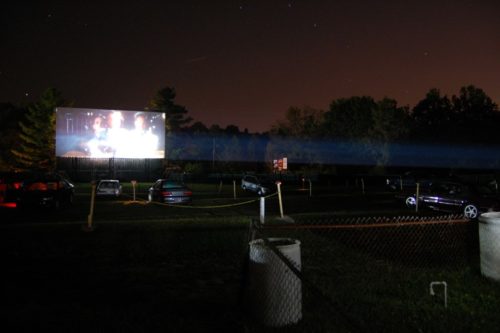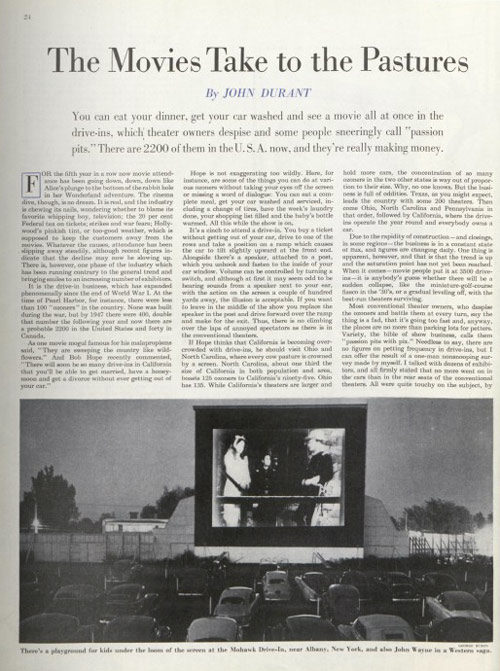Are Drive-In Movies Making a Comeback?

Summer nights and movies remain a perfect match. Blockbuster season brings out the biggest films and stars, but it’s also the prime time for that most American of cinematic venues: the drive-in. This month, we mark the 85th anniversary of that simple, but quietly revolutionary, idea of watching a film from the comfort of your own automobile.
In their heyday, drive-ins made for a unique family movie-going experience. Locations frequently included playgrounds, picnic tables, and other attractions that enticed families to arrive early. Costs could be lower per carload than buying individual tickets, making it more affordable. By the end of the 1950s, more than 4,000 drive-ins dotted the landscape in the U.S. For many, it become a regular, and iconic, event to head to the drive-in on the weekend.
The idea officially came to life on June 6, 1933. Richard Hollingshead of Camden, New Jersey, was trying to solve the problem of the discomfort that his mother experienced in traditional movie theater seating. Hollingshead worked for his father’s company, Whiz Auto Products. His mother’s dilemma and his natural workday surroundings coalesced into a vision of an outdoor screen where you could take in a film from your own car.
From that premise, Hollingshead experimented with projectors and screen types. He tried to figure out ways to deal with rain, as well as calculating what the ideal spacing between cars should be. Hollingshead received a patent for his idea in May of 1933, which led directly to opening Park-In Theaters in Camden the following month. The charge? One quarter per car and an additional quarter for each person.

When Hollingshead’s patent was overturned in 1949, drive-ins exploded in popularity around the country. Thousands of new outdoor theaters popped up throughout the U.S., many of them specializing in so-called “B-movies,” as theater rentals for classier fare tended to be cost-prohibitive. Brandon Peters of the Cult Cinema Cavalcade podcast said that this material helped sell the drive-in to Middle America. He explained, “For genre fare, it was largely beneficial to the Midwest and smaller town crowd that lacked a 42nd Street where grindhouse, Italian horror, and other types of films with double-features were a 24-hour a day experience.”

(@CenterBrook Drive-In, Martinsville, IN)
An article from the October 14, 1950, issue of The Saturday Evening Post looked at the popularity of the drive-in, including their reputation as “passion pits” (a notion parodied to some extent in the film Grease). This reputation seemed to be built in part on conventional theater owners who decried the drive-in as a fad and looked for ways to undermine an innovation that was draining customers to other locations.
The fortunes of the drive-in took a downturn in the 1980s as factors like cost, competition from larger, more comfortable cineplexes, and advances in picture and sound technology took their toll. A regular theater could more easily install new projectors and equipment that kept up with the expectations of the studios in terms of sound and picture, but it was more of a challenge for the drive-in setting in terms of the overall expense
Drive-ins continue to operate in all but a few states. Though far below the estimated peak of around 5,000 outdoor screens during the 1960s, the 348 remaining drive-ins continue to be a regular choice for families. Organizations like the United Drive-In Theatre Owners Association work to get the word out on the format.
And new drive-ins do occasionally appear. The Moon-Lite Drive-In Theater in Terre Haute, Indiana, expects to open in the near future near the original site of the North Drive-In, which closed in 1988. Proprietor Brent Barnhart grew up in Terre Haute and saw many social media posts from people that missed the North. He was in a unique position to do something about it, however, as he owns three conventional cinemas and acquired the Starlite Drive-In in Bloomington, Indiana, last year.
“[I’d] drive by that screen and think ‘What if?’,” Barnhart said. He explained that drive-ins still work because “they are sort of few and far between. They’re a destination, an experience, a place to bring your children and grandchildren. The concept is just still really cool . . . you can spread out your blanket and chairs and take in a movie under the stars.”
